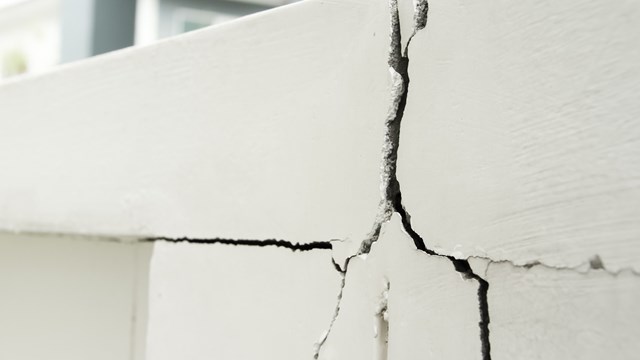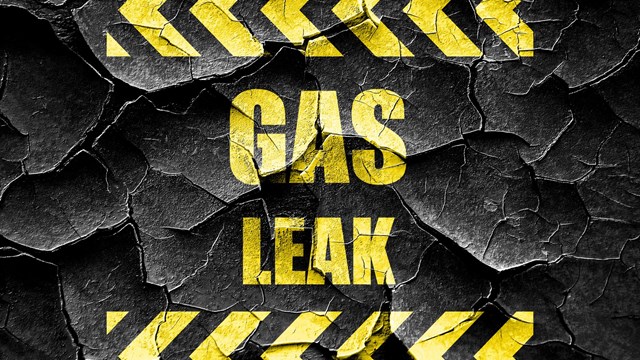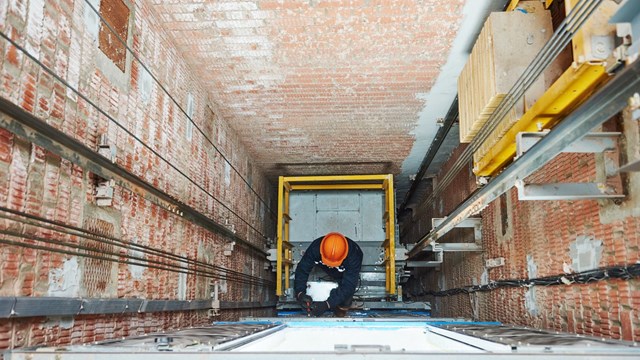Safety first” is good advice on any job, but it is especially appropriate for the varied and dynamic tasks assigned to co-op and condo building staff. Whether checking furnace valves, sealing minor plumbing leaks, keeping the lobby floors shining or getting that flickering light in the ninth-floor hallway fixed, the potential for accident or injury exists in just about any task, no matter how innocuous. Preventing those problems before they arise, however, is the key to a safe workplace—one in which management is fully invested in worker safety, and employees feel adequately protected.
Knowledge is Power
In recent decades, there has been a concerted effort to increase safety for workers on the job and in the office. Thanks to federal organizations such as the Occupational Safety and Health Administration (OSHA), employers have concrete guidelines to keep staff healthy and aware of potential hazards. These OSHA guidelines cover a wide range of on-the-job risks, providing detailed suggestions and requirements for everything from ladders to the insulation on laundry machine steam pipes to proper storage of certain industrial chemicals.
Employees, too, now have access to a wide range of information on what constitutes a safe workplace. From guidelines posted in the workplace to intensive training sessions designed to give people experience in avoiding or overcoming safety challenges, there are myriad ways to protect oneself on the job these days.
According to Richard Mendelson, the area director of the New York office of OSHA, the level of training will vary depending on the worker’s involvement with the materials or equipment they come into contact with within their particular industry. For the real estate industry and property managers, for example, the oversight on worker safety would be different than what would be required of an outside contractor or subcontractor that’s hired to complete a specific job like renovating an exterior facade. “The training component has to be commensurate with the work the employee is doing,” he says.
When it comes to trouble on the job site, it’s usually the mundane things that cause problems, says Mitchell Rosen of the University of Medicine and Dentistry, New Jersey (UMDNJ) in Piscataway. The UMDNJ’s Public Health Program includes the Worker Education and Training Center, which offers safety courses and outreach programs to everyone from hazardous materials workers to New Jersey state police officers. All told, the organization helps train more than 15,000 individuals on worker safety each year.
The most common causes of on-the-job injuries? “Slips, trips and falls,” Rosen says. “We don’t often think of those little things, but they’re the most common sources of problems.”
Dick Koral of the New York Superintendents Technical Association (STA) agrees, saying that one of the most common safety issues he sees results from improper handling of cleaning solutions or other potentially hazardous chemical substances.
By paying attention to the seemingly small problems, on-site safety can be enhanced enormously. Knowing the potential for danger can be the difference in avoiding that danger. “Maintenance workers are covered by OSHA and the law that created it,” says Koral, who teaches a certification course for New York City superintendents, including a three-hour class devoted to health and safety issues.
In fact, a look at some of the 142 citations issued by OSHA during the period of October 2004 through September 2005 to real estate managers and building owners, will reveal what types of problems crop up in the building workplace. The most common violation (36 of which were reported) stemmed from improper handling of asbestos-related materials, says Mendelson, followed by a failure to communicate how to properly handle and dispose of hazardous chemicals or the building’s failure to maintain proper material data sheets (23 incidents reported).
Many of the city’s co-op and condo buildings contain older construction materials, which may end up being asbestos. “If [staff members] see pipe insulation that’s starting to fall apart, they can’t touch it,” advises Koral.
This is where good training comes into play, providing staff members with enough experience and expertise to identify problems, avoid those problems, and find the proper, safe resolution for them.
In the case of asbestos, a super should get “management to bring in a licensed professional to take care of the issue,” Koral says. “If they try to fool with it themselves and release the asbestos particles in the air, that’s going to be a huge problem.”
With OSHA in mind, workers are required to have material data safety sheets visible at the job site. These sheets document the purposes, hazards and other information about substances or materials on site, such as those potentially dangerous cleaning solutions. “Your staff members have a right to have information on whatever materials are brought into the building,” Koral says.
The third most common problem, says Mendelson, is failing to provide workers with proper respiratory protection, and also the proper work gloves, goggles, safety shoes and clothing required to maintain a safe work environment.
Another area where worker safety is key, adds Mendelson, is the servicing and maintenance of electrical and mechanical equipment, such as elevators, trash compactors and bailers. Management has to ensure that proper supervision is available so accidents don’t occur because equipment is defective. Other violations concerned inadequate handling of flammable and combustible liquids, lack of proper permits, failing to provide electrical safeguards, and improper egress, ladders and stairways.
For supers and maintenance staff, taking on repairs that are beyond their skill level or beyond any certifications they might hold is certainly unwise. For example, Koral says, supers should never try to fix an elevator. Management should be called if an elevator breaks down, or, if anyone is in immediate danger, a call to 911 should be placed. For the safety of themselves and others involved, no one should attempt heroics that might end badly.
In addition to keeping staff informed about OSHA regulations, management is also responsible for providing the equipment necessary for an employee to do a job safely. That means providing masks, gloves, hard hats, ventilation gear and other protective gear.
OSHA also formed an alliance with the New York Association of Realty Managers (NYARM) to provide members with information, guidance and access to training resources that will help prevent exposure to workplace hazards like methylene chloride, a common but very toxic cleaning solvent, according to Margie Russell, NYARM executive director. The alliance will help develop training and education programs, provide workplace safety and health curricla for the organization’s members, disseminate timely information and share information on best practices within the industry.
Taking Responsibility
Beyond the legalities, one of the keys to creating a safe work environment is for everyone to share responsibility for that security. “Management should know what the regulations are and understand what hazards their employees are going to face,” says Rosen. Conversely, workers should know their rights as well as their responsibilities and understand how to accomplish their job in a way that avoids as much risk as possible.
If there are accidents, or if problems occur, it’s crucial that everyone involved is aware of what has happened and how it can be avoided in the future, Rosen says. “Although more responsibility does ultimately fall on the employer, we should all be aware,” he says. “We should be aware of what hazards there are out there, both in the workplace and just walking down the street.” Understanding and identifying the pitfalls and the dangers are two of the most important ways to ensure getting around them.
What Happens Next?
When something does go wrong on the job, who does bear the brunt of the responsibility? Most often, it is the owner of the building, says attorney Sandra Mara Sands of Hempstead. Individual board members and managing agents do not usually bear the brunt of the burden when it comes to liability claims.
Buildings, however, should have a significant amount of liability coverage designed to provide for the needs of the injured worker and also protect owners and assets. “If you have one or more employees, then you should have workers compensation insurance,” Sands says.
If an incident does occur on-site and an individual sustains an injury, that employee has 30 days within which to notify his or her employer. The employer then has 14 days to report that claim to the insurance company. Forms are then filed with the workers compensation board. If the case is accepted, the insurance company will begin covering lost wages and medical bills. If it is a contested case and the employer either denies that the incident took place at all, or that it took place on that job site, the case can go to a hearing.
At the hearing, the medical issues related to the specific occurrence will be examined and hashed out. That hearing can stretch into a series of hearings, giving everyone involved a chance to tell their side of the story. “You may have one hearing to go in and establish the case,” Sands says. Other hearings can establish how much salary was lost, or if a doctor prescribed medical treatment is necessary. Cases are not closed, ultimately, until the claimant has reached a plateau in their recovery process, as determined by a doctor. At that point, the matter is considered finished.
If new issues arise, however, employees have recourse to go back and reopen the case. “In New York State, even if the case is closed, the claimant has 18 years to reopen it for monetary and medical costs,” Sands says. After 18 years, only medical costs can be addressed.
Keeping Danger at Bay
Of course, when it comes to injuries, lost wages, court hearings and insurance claims, the best course of action is to avoid them entirely. Safety should always be a top priority for employers, staff and building residents. “Employers should follow OSHA regulations,” Sands says. “And the building super should follow the guidelines.”
Whether on the job installing an air conditioner, cleaning a window, fixing a garbage chute or just walking through the boiler room, staff should keep their eyes and ears open, alert to possible problems. On the other hand, management should provide their staff with the equipment, training and resources they need to do their job, do it well and do it safely. In the long run, the greatest reward is a healthy staff secure in the knowledge that they can do their job without worry. With everyone doing their part, the goal of a safe working environment is certainly an achievable one.
Liz Lent is a freelance writer and frequent contributor to The Cooperator.










Leave a Comment